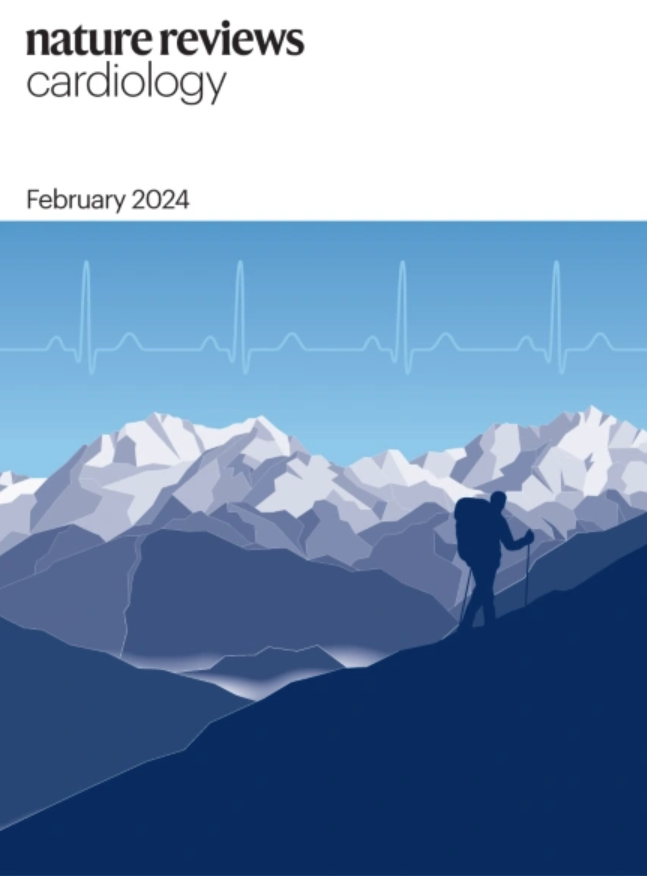扩张型心肌病的病理生理学:从机制到精准医学
IF 41.7
1区 医学
Q1 CARDIAC & CARDIOVASCULAR SYSTEMS
引用次数: 0
摘要
扩张型心肌病(DCM)是一种病因复杂、致病机制多样的疾病。尽管在过去十年中,DCM 患者的预后有所改善,但这种疾病仍然是导致心力衰竭和过早死亡的主要原因。DCM 的传统治疗以射血分数降低型心力衰竭的基础疗法为基础。然而,人们越来越关注个体化治疗和精准医疗。对基因型与表型相关性的进一步了解,逐渐补充了确认遗传因果关系的能力。非遗传因素也会影响 DCM 的发病,越来越多的证据表明,遗传背景与伴随的非遗传诱因或促发因素有关,从而增加了 DCM 病理生理学的极端复杂性。本综述涵盖了 DCM 的各种病理生理学机制,从单基因病因到基因异常与诱发环境因素并存("双击 "假说)。此外,还讨论了普通人群中常见的基因变异以及基因修饰在疾病发生和发展中的作用。最后,强调了未来的研究领域,特别是新型疗法,如小分子、RNA 和基因疗法,以及预防心律失常死亡的措施。本文章由计算机程序翻译,如有差异,请以英文原文为准。


Pathophysiology of dilated cardiomyopathy: from mechanisms to precision medicine
Dilated cardiomyopathy (DCM) is a complex disease with multiple causes and various pathogenic mechanisms. Despite improvements in the prognosis of patients with DCM in the past decade, this condition remains a leading cause of heart failure and premature death. Conventional treatment for DCM is based on the foundational therapies for heart failure with reduced ejection fraction. However, increasingly, attention is being directed towards individualized treatments and precision medicine. The ability to confirm genetic causality is gradually being complemented by an increased understanding of genotype–phenotype correlations. Non-genetic factors also influence the onset of DCM, and growing evidence links genetic background with concomitant non-genetic triggers or precipitating factors, increasing the extreme complexity of the pathophysiology of DCM. This Review covers the spectrum of pathophysiological mechanisms in DCM, from monogenic causes to the coexistence of genetic abnormalities and triggering environmental factors (the ‘two-hit’ hypothesis). The roles of common genetic variants in the general population and of gene modifiers in disease onset and progression are also discussed. Finally, areas for future research are highlighted, particularly novel therapies, such as small molecules, RNA and gene therapy, and measures for the prevention of arrhythmic death. In this Review, Mestroni and colleagues provide an overview of the pathophysiological mechanisms underlying dilated cardiomyopathy, including both genetic and non-genetic causes, and discuss the development of novel therapies, such as small molecules and gene therapy.
求助全文
通过发布文献求助,成功后即可免费获取论文全文。
去求助
来源期刊

Nature Reviews Cardiology
医学-心血管系统
CiteScore
53.10
自引率
0.60%
发文量
143
审稿时长
6-12 weeks
期刊介绍:
Nature Reviews Cardiology aims to be the go-to source for reviews and commentaries in the scientific and clinical communities it serves. Focused on providing authoritative and accessible articles enriched with clear figures and tables, the journal strives to offer unparalleled service to authors, referees, and readers, maximizing the usefulness and impact of each publication. It covers a broad range of content types, including Research Highlights, Comments, News & Views, Reviews, Consensus Statements, and Perspectives, catering to practising cardiologists and cardiovascular research scientists. Authored by renowned clinicians, academics, and researchers, the content targets readers in the biological and medical sciences, ensuring accessibility across various disciplines. In-depth Reviews offer up-to-date information, while Consensus Statements provide evidence-based recommendations. Perspectives and News & Views present topical discussions and opinions, and the Research Highlights section filters primary research from cardiovascular and general medical journals. As part of the Nature Reviews portfolio, Nature Reviews Cardiology maintains high standards and a wide reach.
 求助内容:
求助内容: 应助结果提醒方式:
应助结果提醒方式:


